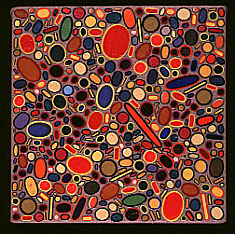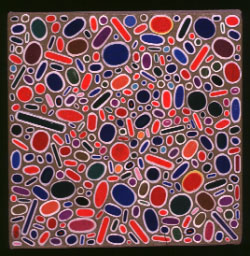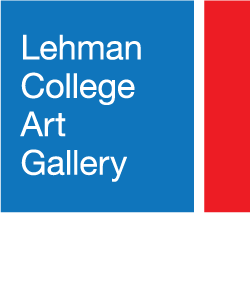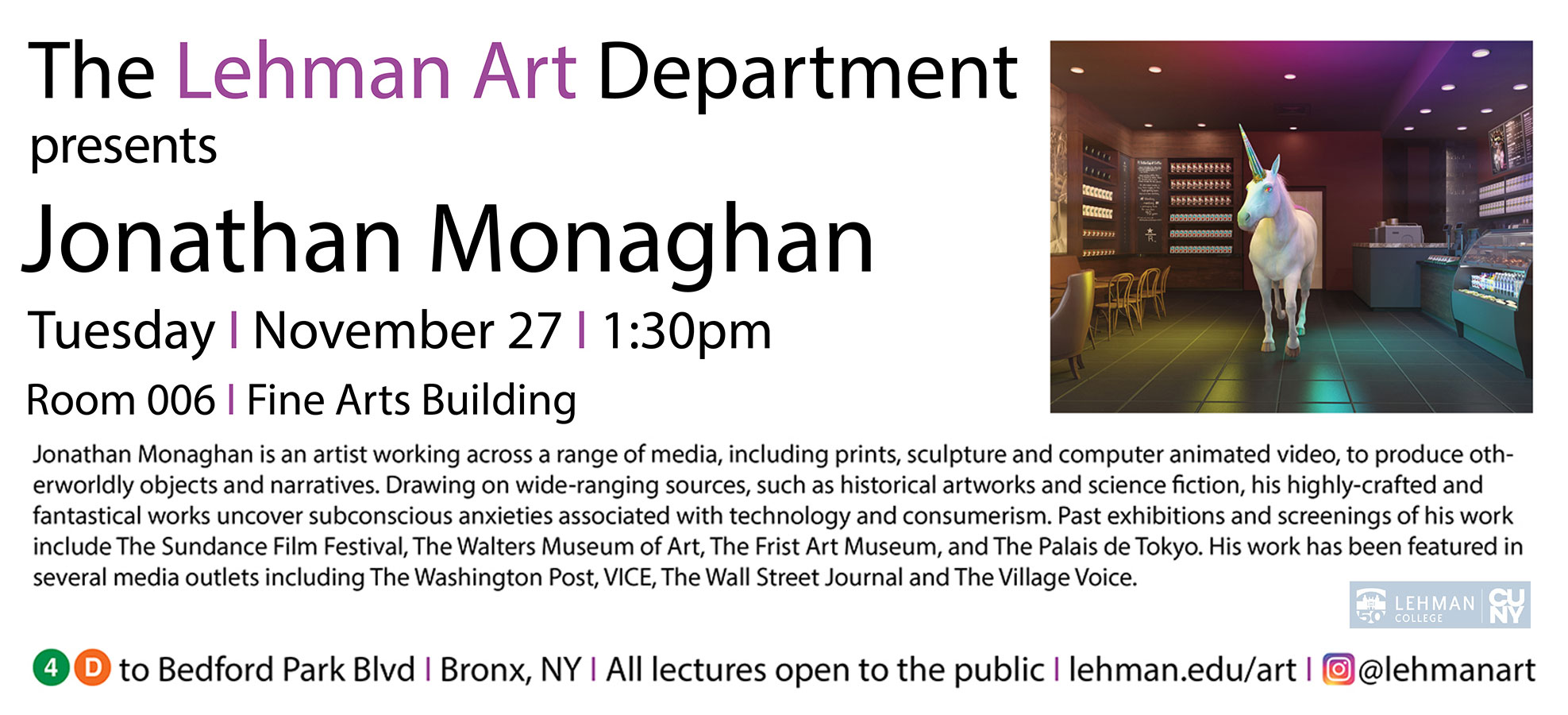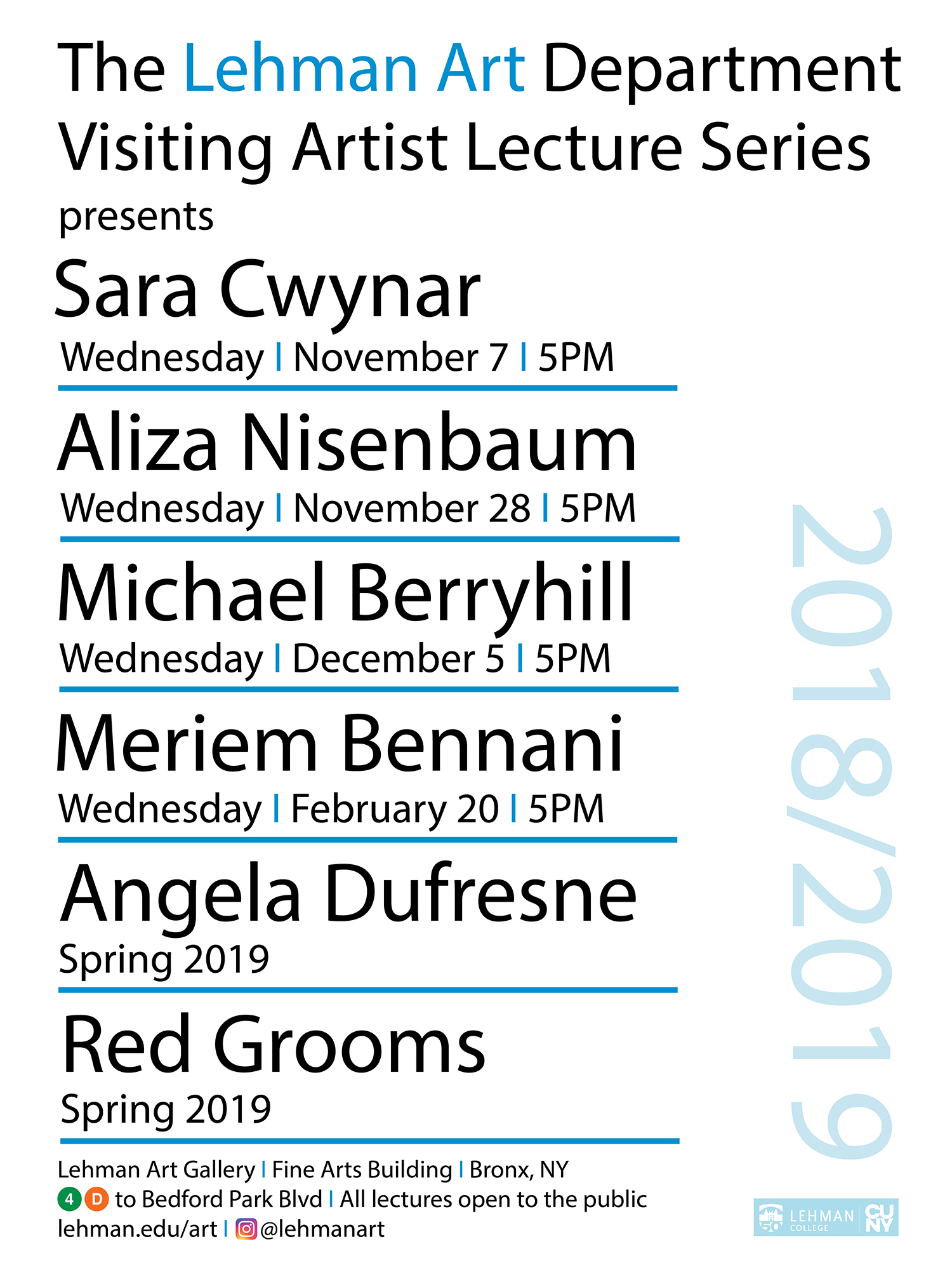DON DAVIS: Ten Small Paintings
I explore the possibilities of varied abstractions achieved within the
parameters of a simple, strict, system that is source- & process-oriented:
making artworks compiled of printed geometric “units” reclaimed from found
lettering and imagery. With the use of this system, the scattered histories
of different elements combine and their functionality is shed through
subjection to industrious hand labor, and they join together to acquire a new
collective vibrancy.
In the past, I have used such materials as discarded bingo cards,
parking-lot receipts, or promotional posters; for the last few years I’ve
been using forms found on discarded commercially screen-printed cardboard cartons, whose ready availability and variety affords me a rich vein of raw material to exploit, and whose impersonal, often-faulty industrial printing I find irresistible. The time invested in the art-making process imbues the work with an authentic, hand-made quality.
Technically, pieces are the result of three distinctly different
procedures:
I am engaged in a constant collection program, using a box cutter at
all times and places (except airports), culling prospective material. A
process of “distillation” reduces bushels of found text into cups of trimmed
geometric elements. During application, like forms find one another and
condense into cellular clusters of varying intricacy.
1. COLLECTION:
In this phase I accumulate stock by looking at printing with a disregard
for literacy, seeing text as abstraction. I look for basic shapes, like
circles, spots, or crosses, often in the negative spaces within the printed
letters rather than in the words themselves. I am constantly searching for
boxes; patience and resourcefulness are full-time requirements. Scavengers’
luck comes into play: I may become superstitious and walk circuitous routes
through neighborhoods, especially on recycling days (needless to say, this is
a solitary pursuit). Maximizing the range of collection of these units is
fundamental because a greater variety from which to choose acts as a
“palette” and ultimately helps to determine the rhythm and direction of each
product. Some of the larger pieces entail months or even years of
accumulation time.
2.REDUCTION:
Units are first delaminated(peeled). Because of the differing grades of
raw materials I find, their final thicknesses can vary from filmy to that of
a heavy “card stock.” Next they are scissor-trimmed into their specific
shapes. This is very time-consuming. I then sort them into several
interchangeable collections according to properties such as size, shape, or
color. Over the course of the past 3 years the collections from cardboard
sources have grown and varied in unexpected ways.
3. APPLICATION:
Collections of units are applied, using archival, water-based PVA
adhesive, to linen- or cotton-covered handmade birch panels. Patterns can be predetermined or arise according to such ideas or issues as surface tension,
integration, metastasis, magnetic attraction, real estate development or
military strategy. Covered segments grow together, eventually filling the
entire face area of the painting. The artwork is finished with a matte
UV-protectant varnish to prevent fading and increase surface continuity, thus highlighting the noticeably tactile painting surface.
I’m interested in providing the visual equivalent of a simple pop
instrumental song, made of reclaimed garbage. I hope for an immediate visual impact: an energized but self-contained marriage of quietness and loudness.
—Donn Davis
